Footfall Analysis | A Day in Makati
Makati city is one of the busiest cities in the country and is one of the most productive contributors to its economy. From wide array of shopping malls, 24-hour offices, and bustling nightlife, it may seem more fitting of the name “the city that never sleeps”. Even with the advent of technology and emergence of AI, human factor still drives the city’s activity. It’s the people that go about their day to live-work-and-play. Let’s take a look at how people move around Makati using footfall heatmaps. Note that this is only a part of Makati. This is a day in Makati.
Start of day
March 3 2024 is a fairly unremarkable day in the metro. The day starts at 4 am, with Poblacion and Rockwell already above average density. Knowing Poblacion, this might be over-pouring from the previous night’s parties.
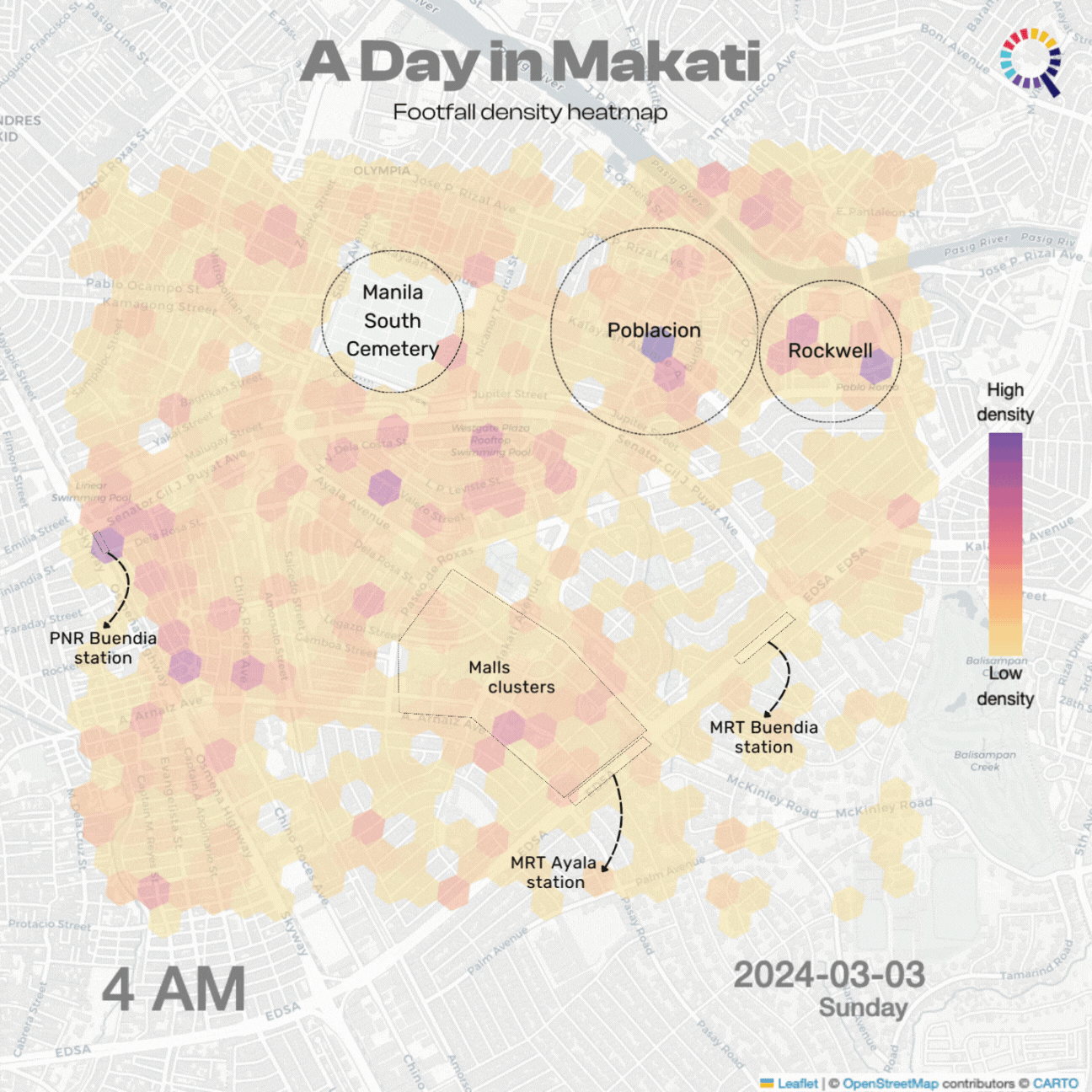
Offices are still filled with workers on an international schedule who are finally seeing the break of dawn while for some, it’s the end of their shifts. The 24-hour cycle of buses running along Buendia take the commuters to their destinations. Recently, it was announced they are adding another bus route here – LRT Buendia to BGC. I wonder how that will shake up footfall around Makati.
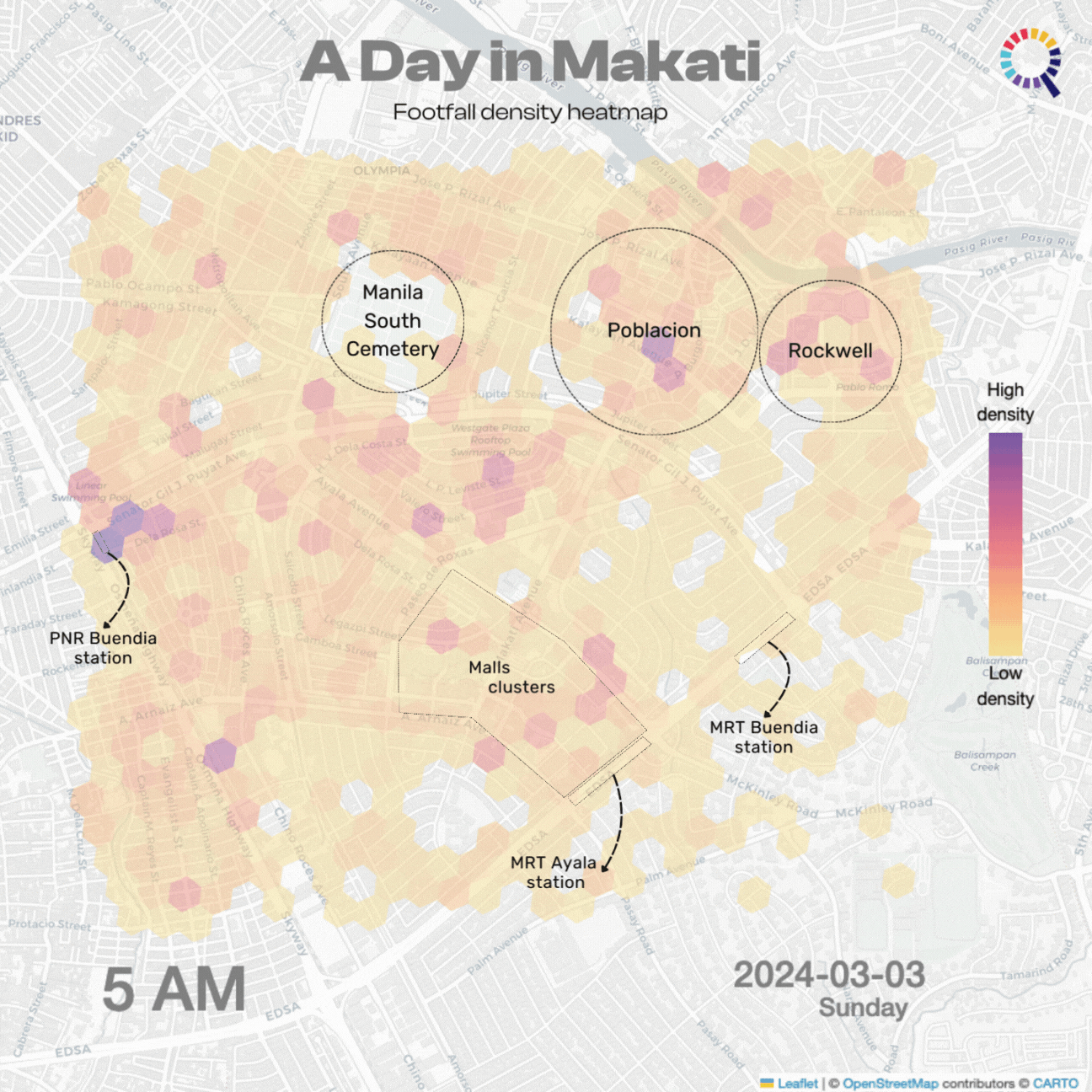
By 6 am, Ayala car free day starts. Hundreds and thousands of joggers circle around Ayala, enjoying the car-free road. This is an effort by the Makati LGU to promote a healthy lifestyle among its citizens by providing a safe, shared environment in the heart of the city. Supplementary to this effort, Legazpi active park and Jaime Velasquez park host food bazaars and flea markets attracting visitors while they relax among the green spaces.
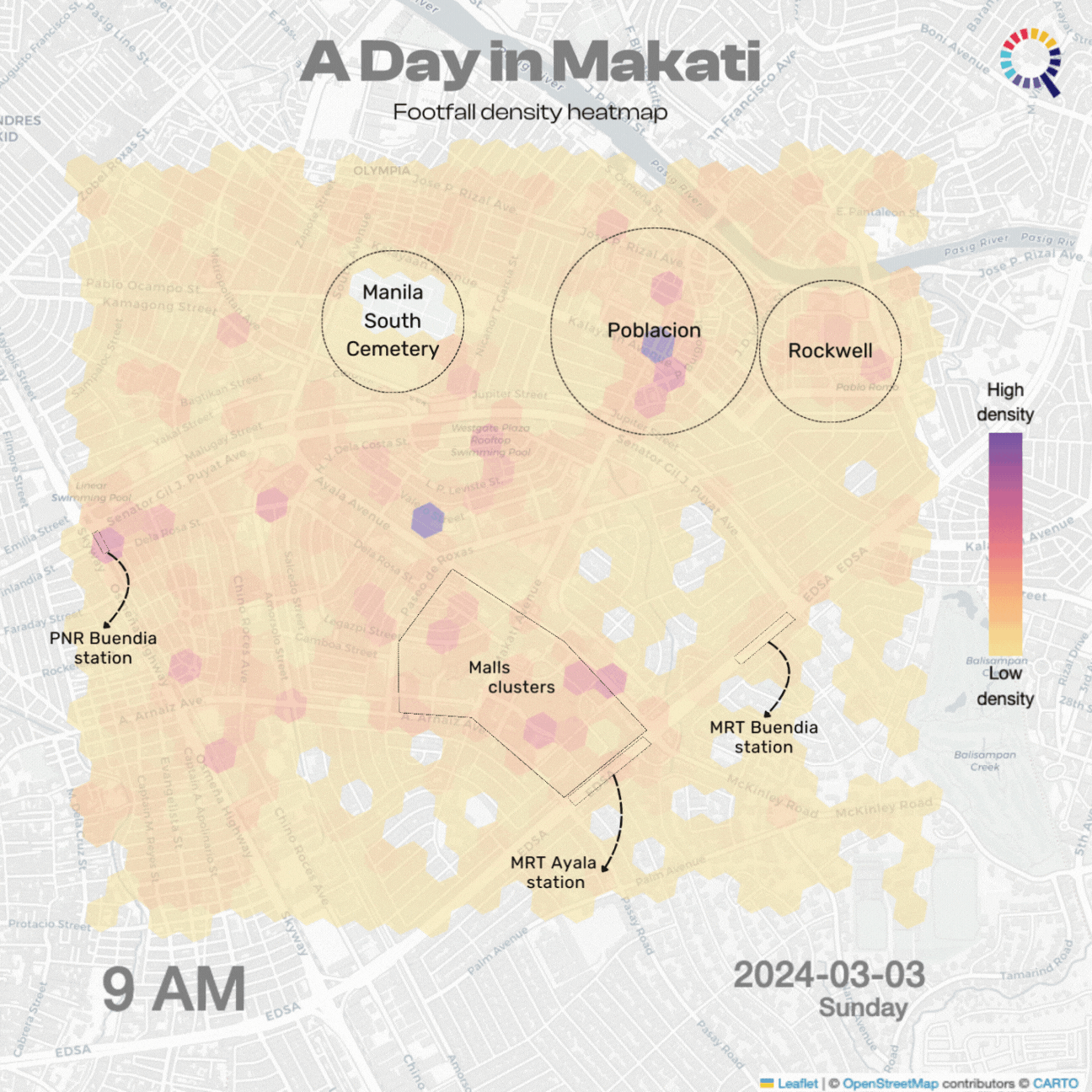
At around 9-11 am, malls open. We can see which malls have higher density upon opening. If you want to know which malls received the highest footfall in a specific span of time, you can email us to check our products. Meanwhile, let’s look at lunch time footfall mapping.
Noon
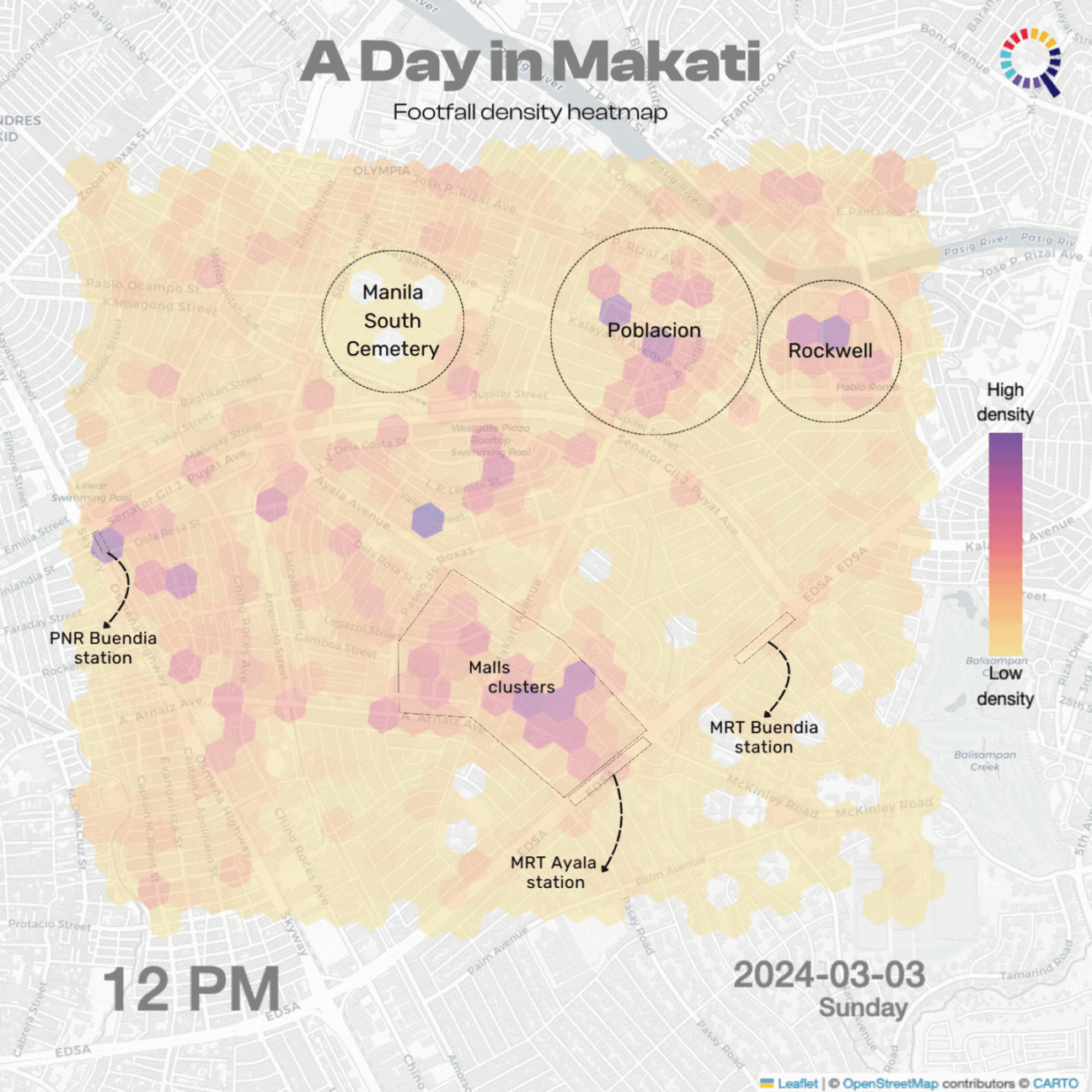
At noon, footfall density peaks in Makati. Footfall density in malls is also the highest in these hours. This is not limited to the mall clusters near Ayala Triangle. Poblacion, Rockwell, and Little Tokyo have good selection of food chains and stalls.

Evening
Nearing the end of daytime, almost everyone is rushing to get home and prepare for the next day. The strip of EDSA covered in the dataset peaks around this time. But the apparent build up of traffic in EDSA during this rush hour is nothing compared to the congregation of people in the mall cluster area hurrying to get home. And we can generalize this, an area where people can walk can pack more people than roads can.
This is the part of human mobility that malls took full advantage off. This is partly why malls are fighting over building a train station to connect to their assets.
Speaking of trains, both train stations have lower footfall density than shopping malls. This could be attributed to these stations being underground with insufficient gps connectivity.
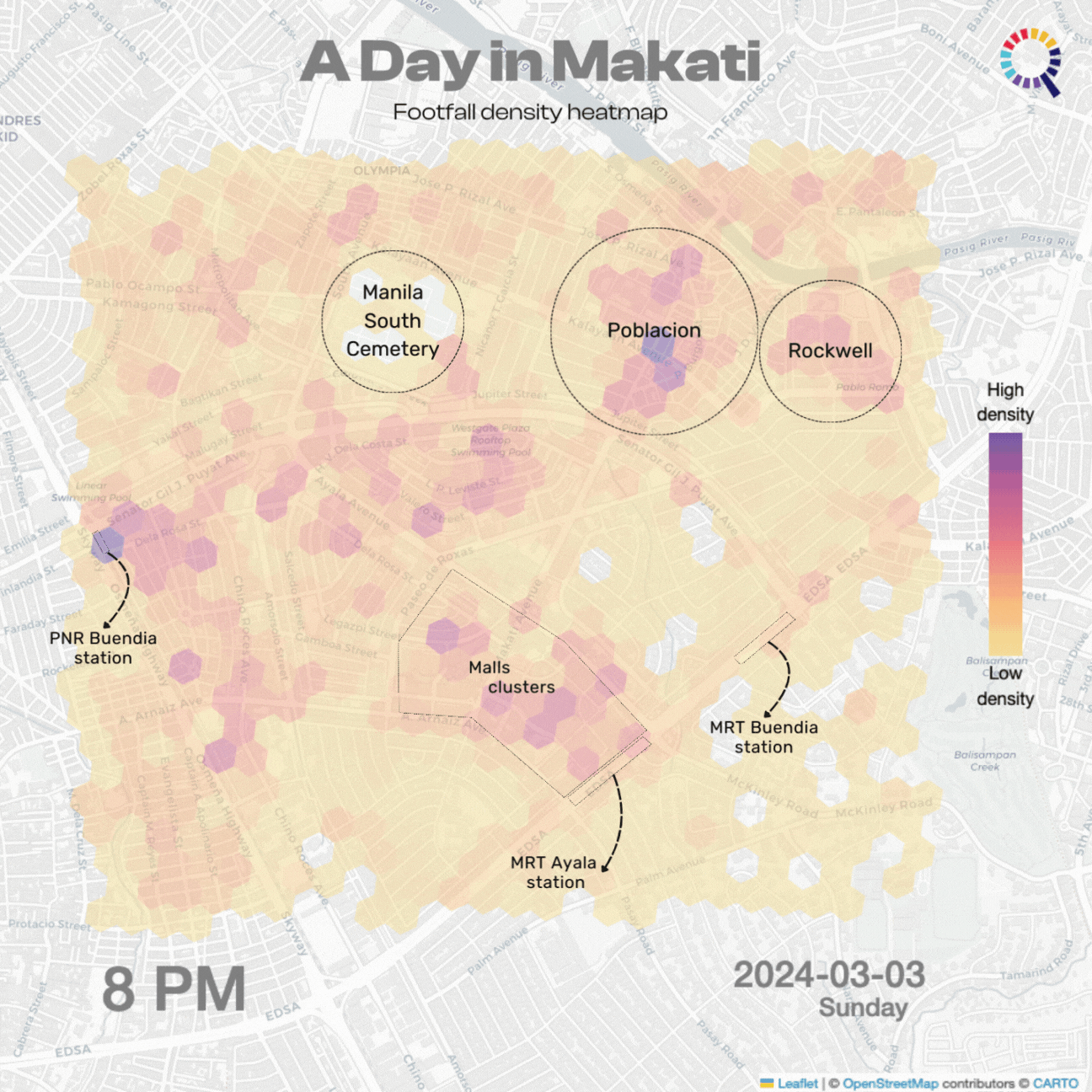
By 8 pm onwards, more people flock out of shopping malls as closing time approaches. We also see less activity and movement in EDSA, Buendia, Skyway. In contrast, Kalayaan corner Makati avenue got consistent high density by these time frames. This busy intersection has a jeepney station going to Manila and long traffic light stops that perhaps intensifies the footfall density in this area.

Finally, the day ends with Poblacion peak hours. Some offices have work hours even on the weekend so we are not surprised some people still fill in those spaces. Footfall density in the mall cluster area is fixed on primarily road networks, and the MRT stations also have few to no footfall in this hour as expected.
Summary
A day in Makati reinforces, at least for me, the idea that cities are alive. It breathes, it grows; some times more alive, some times more peaceful – quiet. Much like life, the city is structured, in way to let people do the things they do. Some cities are more efficient at doing that, and some are less. As much as we as individuals want to think that we have absolute control of what we do, the city does affect how we live our lives. From the availability of trains going to work, how far we are from our preferred hobbies, does the market nearby offer healthy food options – our decisions are almost always constrained by the reality of the world around us. Even with the sophistication of life here, Makati is no exception to that.
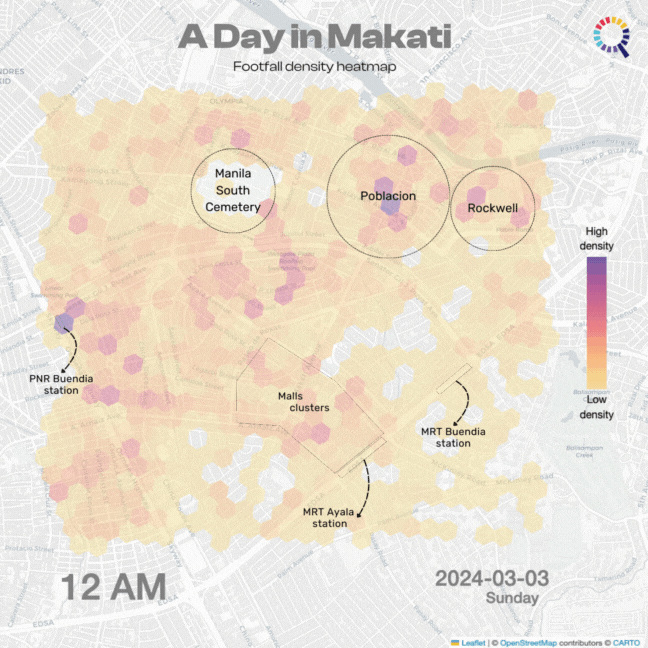
In this article, we saw the movement of people around Makati and how it is linked to places of interests and time. Businesses can utilize the time factor with aggregated footfall solutions reports to identify opportunities connected to human mobility. We saw how mall opening hours affected the movement of people from transportation to shopping malls, which intersections are busy in particular time frames, and that cemeteries are in fact not a place of interest in March.
Inquiro can adjust these time granularities to fit your business needs. Apart from the hour by hour footfall report you saw here, we also offer daily, weekly, and monthly views.
If you are interested in our solutions, you may contact us at info@inquiro.ph.
P.S. Recently, I wrote an article comparing the footfall on Pasig Esplanade and Dolomite beach. You can check that article here.



